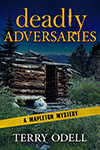
Photo credit: Wikimedia Commons, CCA-SA 3.0
by Debbie Burke
In September 2023, reports were made that “star” forensic scientist Yvonne “Missy” Woods mishandled DNA evidence. In October 2023, she was placed on administrative leave. In November, 2023, after almost 30 years with the Colorado Bureau of Investigation (CBI), Woods retired to avoid termination.
CBI launched an internal affairs investigation into Woods’s conduct and the results were released on June 5. 2024.
Some of their findings included:
“In 2014, a coworker questioned Woods’ testing of evidence in a case and reported concerns to a Technical Leader.
In 2018, Woods was accused of data manipulation. In response, she was removed from casework and given other duties pending a review of the accusation.
After the review, Woods was later reinstated.
The results of the 2018 review were not escalated to the former CBI Director or CDPS leadership.
CBI has initiated additional investigations into the circumstances surrounding the 2018 process.”
As of the date of the report, 654 cases had been identified as affected by Woods’s data manipulation. The report goes on to say:
“[The investigation] revealed that Woods manipulated data in the DNA testing process, leading to incomplete test results in certain cases. It also found she concealed her activities from the technical review process. She engaged in the deletion and alteration of data, and she failed to provide thorough documentation in case records related to certain tests performed.
While the review did not find evidence of Woods falsifying DNA matches or fabricating DNA profiles, Woods deviated from standard testing protocols and cut corners, raising concerns about the reliability of her testing.”
The investigation continues, with Woods’s cases back to 1994 being reviewed. CBI said they would not release further information because of an ongoing criminal investigation.
Parts of a November interview between Woods and investigators were played by 9News.com in July 2024. Initially, Woods’s answers were: “I don’t know” or “I don’t remember.” When asked why she altered or omitted test results, she answered, “I think I’m burned out.”
Later in the interview, her answers were more revealing:
“The implications were not even a thought and I think that for that stuff it, it was like click done, move on, click done, move on and not even, not even an additional thought…I don’t know any of these people. I don’t have any reason to pick this one and not the next one that I took forward all the way through whatever.”
[Investigator] Hassenstab asked her how she felt about what she was doing and if she felt bad about it.
Woods said, “I didn’t even think about it. I didn’t even think about it until five weeks ago.”
Five weeks ago refers to when she was removed from her position and retired shortly afterward.
According to CNN, a week after Woods’s resignation, a federal lawsuit was filed alleging James Hunter was wrongly convicted of burglary and sexual assault in 2002 based on “fabricated and false [hair] evidence” examined and tested by Woods.
Westword.com reports a lab worker recounted an incident in 2014 or 2015 when “Woods allegedly threw away fingernail clippings that were assumed to be evidence.”
Woods came in, brushed the fingernail clippings in her hand, and threw them in the biohazard or garbage bin,” the worker said, telling investigators she was “99 percent” sure the clippings were evidence.
James Karbach, director of legislative policy and external communications for Office of the State Public Defender says, “This has become about more than just one longstanding analyst tampering with evidence and deleting data, but it also is about the systemic failures of an accredited state crime lab, the people, and the processes that should have stopped this from happening over and over for years…there have likely been hundreds of public defender clients who were given intentionally manipulated data and who were prosecuted with unreliable evidence.”
Misconduct raises concerns not only of wrongful conviction, but also that guilty parties may walk free. If courts rule DNA evidence was mishandled, cases can be thrown out.
~~~
TKZers: Have you heard of other crime labs where evidence can’t be considered reliable? Does this scenario inspire story ideas? An innocent person wrongly imprisoned? A killer skates because mishandled evidence is thrown out?
~~~
Fruit of the Poisonous Tree is a legal doctrine that says if evidence is illegally obtained, it’s not admissible in court. It’s also the title of Debbie Burke’s new thriller.



 The American Library Association, ALA, documented 4,240 unique book titles targeted for censorship in 2023—a 65% surge over 2022 numbers—as well as 1,247 demands to censor library books, materials, and resources. Pressure groups focused on public libraries in addition to targeting school libraries. The number of titles targeted for censorship at public libraries increased by 92% over the previous year, accounting for about 46% of all book challenges in 2023.
The American Library Association, ALA, documented 4,240 unique book titles targeted for censorship in 2023—a 65% surge over 2022 numbers—as well as 1,247 demands to censor library books, materials, and resources. Pressure groups focused on public libraries in addition to targeting school libraries. The number of titles targeted for censorship at public libraries increased by 92% over the previous year, accounting for about 46% of all book challenges in 2023. According to PEN America:
According to PEN America: If I may be so bold, I have a new release dropping on October 3rd, and I don’t think anyone will find cause to challenge or ban it. It’s available for preorder now.
If I may be so bold, I have a new release dropping on October 3rd, and I don’t think anyone will find cause to challenge or ban it. It’s available for preorder now. 
 Like bang for your buck? I have a
Like bang for your buck? I have a 

 Recently Draft2Digital (D2D) did a survey among authors, publishers, and others to determine how they felt about the use of AI and what authors would consider fair compensation for use of their work. D2D CEO Kris Austin kindly gave permission to quote from the survey results (full results at this
Recently Draft2Digital (D2D) did a survey among authors, publishers, and others to determine how they felt about the use of AI and what authors would consider fair compensation for use of their work. D2D CEO Kris Austin kindly gave permission to quote from the survey results (full results at this 










 Here’s the epigraph from Lacey’s Star:
Here’s the epigraph from Lacey’s Star:




 When a writer pours their heart and soul into a book, the last thing they expect is a 1-star review. Negative feedback can significantly impact book sales, especially these days where many readers rely on reviews to decide what to read next.
When a writer pours their heart and soul into a book, the last thing they expect is a 1-star review. Negative feedback can significantly impact book sales, especially these days where many readers rely on reviews to decide what to read next. There was a hit song back in the 70s called “Torn Between Two Lovers” (not to be confused with the Hannibal Lecter hit, “Torn Between Two Livers”).
There was a hit song back in the 70s called “Torn Between Two Lovers” (not to be confused with the Hannibal Lecter hit, “Torn Between Two Livers”).